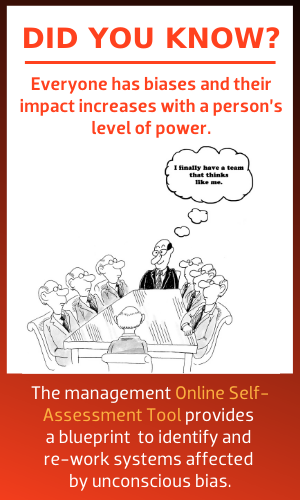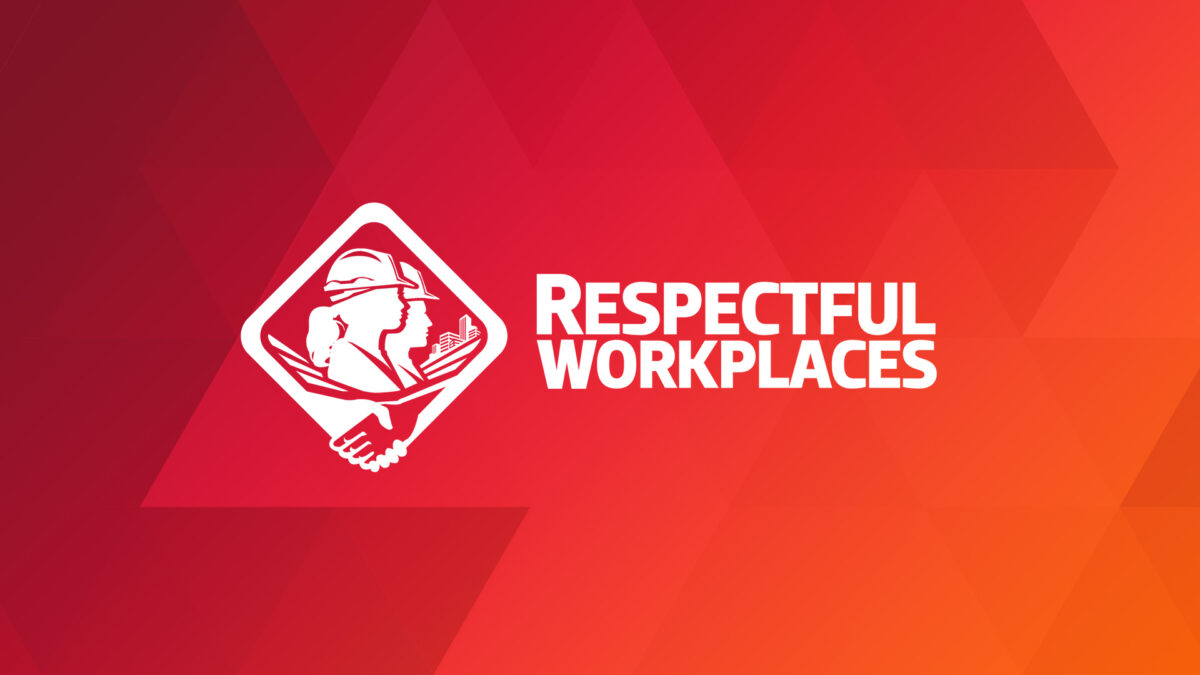Does your organization include unconscious bias awareness in its leadership training?

Researchers are uncovering the impact that our unconscious mind has on our daily decisions and behaviours. As discussed in our previous blog, most leaders and managers want to have fair and equitable organizations that recruit and retain the most talented and capable people, regardless of race, or any other social category such as age or gender. However, because of the power of the unconscious mind, there is a gap between intent and impact.
In their book, The Inclusion Dividend, authors Mason Donovan and Mark Kaplan come to the conclusion that the biggest challenge in addressing systemic racism is reducing unconscious bias, both at the individual level and the systems level. Individuals and systems are connected: our individual bias gets built into the systems we develop.
Everyone has biases; however, their impact increases with the level of power a person holds. Because of this, it becomes critical for organizations to include unconscious bias awareness in its leadership training. Without this awareness, leaders and managers won’t be able to contribute at the level they could be and it will be difficult for organizations to eliminate or reduce systemic racism.
Readers may remember that bias is an inclination or preference formed without reasonable justification that can prevent judgement from being balanced or fair. We are exposed to incredible amounts of information every day and our conscious brain cannot make sense of all of that information. This leads us to use mental shortcuts, primarily in the form of categories stored in our unconscious mind that allow us to make quick decisions.
Our mind associates new people, things, situations, etc. with information already stored in our unconscious mind. Unfortunately, this information is frequently full of stereotypes and misinformation that create unintended biases. A stereotype is a false or generalized perception that results in the categorization of all of the members of a group, regardless of an individual’s talent and capability. Stereotypes are formed by socialization, our personal experiences, and representations in media. For example, if we constantly see images of Black people as singers and entertainers, these associations become fixed in our unconscious mind and it becomes difficult to associate Black people with other roles such as leaders or scientists.
Research has found that our unconscious mind works to maintain stereotypes and reject contradictory information. Even if we don’t believe a stereotype consciously, old stereotypes are continually reinforced in ways that make it difficult to effectively change the information in our unconscious mind.
Some of the ways that bias and stereotypes are reinforced automatically by our unconscious mind:
Affinity bias
- We tend to relate more easily to people who share similar backgrounds or experiences: often, we feel a higher level of comfort with those like us. This bias is often the basis of hiring for “culture fit” rather than an individual’s skills and abilities.
Confirmation bias
- We tend to focus on, search for, interpret, and remember things that confirm our preconceptions and stereotypes.
Priming bias
- We are “primed” to think more highly of a person when we know that a trusted colleague thinks highly of that person. For example, when making a promotion decision, we may choose an individual based on the reports of others rather than on an independent assessment of the candidate’s suitability for the position.
Negativity effect
- When evaluating the causes of behaviours of a person we dislike, we will attribute positive behaviour to outside causes such as luck, and negative behaviour to that person’s inherent nature.
Selective perception
- We tend to perceive the qualities in others that we expect: if we distrust a person based on any of our stereotypes, we will perceive only characteristics that support the stereotype and fail to see that person as an individual with skills and abilities.
Group attribution error
- We tend to believe that characteristics of a member of an underrepresented group are reflective of all members of that group. For example, the only member of an underrepresented group in a meeting is asked to speak for all members of the group.
Bias blindspot
- We tend to believe that we are less biased than other people.
Unconscious bias and stereotypes result in less than optimal decisions. As an individual’s level of power increases, he or she has more influence on policies that affect an entire organization, as well as on hiring for key positions that have significant impact on the future of an organization. This has an impact on the ability of organizations to reduce systemic racism and create organizations that are inclusive of Black, Indigenous and People of Colour.
The BuildForce Respectful Workplace Online Toolkit provides three tools based on the proven practices of respectful and inclusive organizations to help address systemic racism: the Online Self-Assessment Tool, a Policy Framework and Implementation Guide, and the online course, “Working in a Respectful and Inclusive Workplace.”
The management Self-Assessment Tool provides a blueprint to identify and re-work systems affected by unconscious bias.
Also look for the new BuildForce online course, to be released in the new year, to help leaders and managers to understand systemic racism. BuildForce is also developing a new module for the “Working in a Respectful and Inclusive Workplace” course to help workers develop awareness about systemic racism, also to be released in the new year.
For more info:
- Banaji, Mahzarin R. and Anthony G. Greenwald. Blind Spot: Hidden Biases of Good People. Bantam Books, New York, U.S., 2013.
- Donovan, Mason and Mark Kaplan. The Inclusion Dividend, 2nd Ed. DG Press, New Hampshire, U.S., 2019.
Read from the beginning. Click here to start at Part 1.
What can an effective Respectful and Inclusive Workplace Program deliver?
- Become an employer of choice – attract, retain, and advance top talent from all sources of labour
- Unlock collaboration and innovation – create high-performing teams through diversity of thought and experience
- Build your brand – your organization will gain a competitive edge as a leader and innovator
Get started today!
The BuildForce Canada Online Respectful and Inclusive Workplace Toolkit includes:
- the Respectful Workplace Online Self-Assessment Tool to assist organization leadership in assessing their current situation and identifying where they may need to make changes
- the Respectful Workplace Policy Framework and Implementation Guide to assist organizations in creating and implementing a policy that supports a respectful and inclusive workplace
- the Respectful Workplace Online Training Course to train workers on how to create and support a respectful and inclusive workplace
- the online course Introduction to Understanding Systemic Racism: A Guide for Leaders and Managers
All the resources you need to create and support a respectful and inclusive workplace!

Respectful and Inclusive Workplaces
